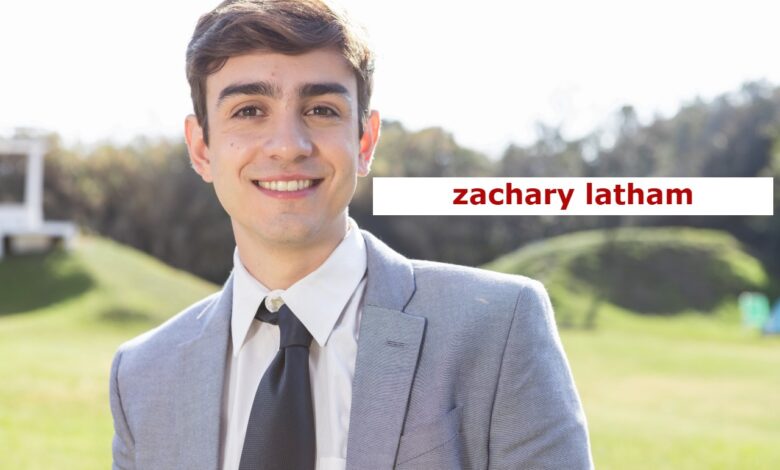The Complex Story of Zachary Latham: A Tale of Social Media, Conflict, and Tragedy

Who Is Zachary Latham?
Zachary Latham is a name that exploded into public consciousness under tragic and controversial circumstances. Before the incident that would define him in the public eye, Latham was just another teenager navigating the turbulent waters of adolescence, social media, and the typical drama that comes with suburban life. What sets his story apart is the way it unraveled—intertwining violence, viral fame, and questions about responsibility in the digital age.
Living in Vineland, New Jersey, Latham was relatively unknown outside his community. But he had begun gaining attention on TikTok, where he frequently posted content that included confrontational interactions with his neighbors. While many teenagers use TikTok for dance videos or funny skits, Latham’s content was edgier—often capturing and mocking real-life disputes. This choice would later become central to the tragic events that followed.
What makes the story even more compelling is how seemingly small, everyday tensions escalated into something much more serious. It wasn’t just about a neighborhood feud—it became a case study in how online fame can influence real-life decisions, sometimes with irreversible consequences.
The Dispute with the Durham Family

The conflict that led to the fatal outcome was between Latham and his neighbors, the Durham family. It reportedly started over minor disagreements—things like driving too fast in the neighborhood or noisy behavior. But these incidents quickly turned personal and public. Latham began recording confrontations with the Durhams, particularly with William Durham Sr., a corrections officer and father, and posting them on TikTok.
In these videos, Latham often portrayed himself as the victim, claiming harassment and bullying from the Durhams. But critics argue that he was deliberately antagonizing the family for content and views. These posts quickly gained traction, earning Latham a following and boosting his online notoriety.
The situation grew more intense as each party dug in their heels. There were multiple incidents involving the police, and the atmosphere in the neighborhood became increasingly hostile. While many disputes between neighbors might end in a shouting match or a formal complaint, this one was heading toward a much darker path.
The Fatal Encounter
Everything came to a head in May 2020. According to reports, the Durhams confronted Latham at his residence following an ongoing series of provocations. What happened next was chaotic and devastating. A physical altercation broke out, during which Latham fatally stabbed William Durham Sr. with a knife. The entire incident was caught on video, which added another layer of complexity to the story.
Latham claimed self-defense, stating that the Durhams had entered his property and threatened him. However, the prosecution painted a different picture—arguing that Latham had essentially baited the family into the confrontation. The fact that Latham’s wife allegedly filmed the incident added fuel to the claim that the encounter was premeditated or at least manipulated for social media attention.
This event shocked not just the local community but also the broader internet audience that had been following the drama unfold online. The line between content creation and real-life consequences had never been more blurred.
Legal Proceedings and Controversies
The legal ramifications of the case were extensive. Latham was charged with manslaughter, not murder—a distinction that immediately drew public scrutiny. Critics argued that the charges were too lenient given the circumstances, while supporters insisted that Latham had acted out of fear and self-defense.
The trial proceedings were followed closely by media outlets and the online community. Testimonies revealed a pattern of escalating tensions, questionable judgment from all parties, and a troubling mix of ego and social media influence. Latham’s defense team worked hard to frame the narrative around a young man under threat, while the prosecution focused on a calculated effort to provoke and record a deadly confrontation.
In the court of public opinion, views were just as divided. Some saw Latham as a cautionary tale about the dangers of chasing internet fame at all costs. Others viewed him as a victim of a hostile environment and adults who should have known better. Whatever your perspective, it’s clear the legal and ethical lines were deeply entangled in this case.
The Role of Social Media in the Tragedy
One of the most sobering aspects of the Zachary Latham case is the undeniable influence of social media on the series of events. In a world where content is king, and attention is currency, Latham’s actions appeared driven in part by the desire for online validation. TikTok, Instagram, and YouTube aren’t just platforms anymore—they’re stages, and Latham was performing for an audience.
Social media doesn’t just reflect our reality—it shapes it. And in this case, it arguably escalated a neighborhood dispute into a deadly confrontation. The algorithms that reward provocative content may have played an indirect role in the choices Latham made. After all, each video brought more views, more followers, and more encouragement to push the envelope.
But it wasn’t just Latham who was affected. The Durhams, too, were dragged into the online spotlight, often without their consent. Their private lives became fodder for public consumption, and their reputations were shaped by clips that lacked full context. The situation begs the question: where do we draw the line between free expression and reckless endangerment?
Public Reaction and Ethical Questions
The public response to the Zachary Latham case has been deeply polarized. On one hand, there’s empathy for a young man who may have felt cornered, isolated, and under constant threat. On the other, there’s outrage over a perceived manipulation of real-life conflict for digital fame, resulting in the loss of a human life.
Ethical debates have swirled around every aspect of the story. Should Latham have been allowed to post videos of private individuals without consent? Did the platforms have a responsibility to intervene when the content became clearly antagonistic? What role, if any, should followers play in influencing behavior by rewarding dangerous content with likes and shares?
These questions don’t have easy answers, but they’re vital in an age where anyone with a smartphone can become an overnight sensation—or a central figure in a tragedy. The internet may offer freedom of expression, but it doesn’t absolve individuals from the consequences of their actions.
Lessons Learned and the Way Forward
The Zachary Latham case is more than just a headline; it’s a wake-up call about the complex interplay between technology, human behavior, and community dynamics. It serves as a stark reminder that actions have consequences, both online and off.
Parents, educators, and policymakers need to address the influence of social media more seriously. That means teaching young people about digital ethics, empathy, and the importance of conflict resolution without resorting to public shaming or violence. It also means holding platforms accountable for the kinds of content they amplify.
For individuals, the takeaway is clear: validation from strangers on the internet is never worth real-world harm. Fame can be fleeting, but consequences are permanent. The line between entertainment and endangerment is thinner than many realize, and once it’s crossed, there’s no going back.
Conclusion
Zachary Latham’s story is tragic, complex, and emblematic of a larger societal shift. It’s a story about youth and rage, about internet clout and real-world tragedy. Above all, it’s a cautionary tale—one that underscores the urgent need for better digital literacy, stronger community relationships, and a reevaluation of how we define influence and success in the 21st century.
As we move forward, may we remember that behind every viral video, there are real people—and sometimes, irreversible consequences.

